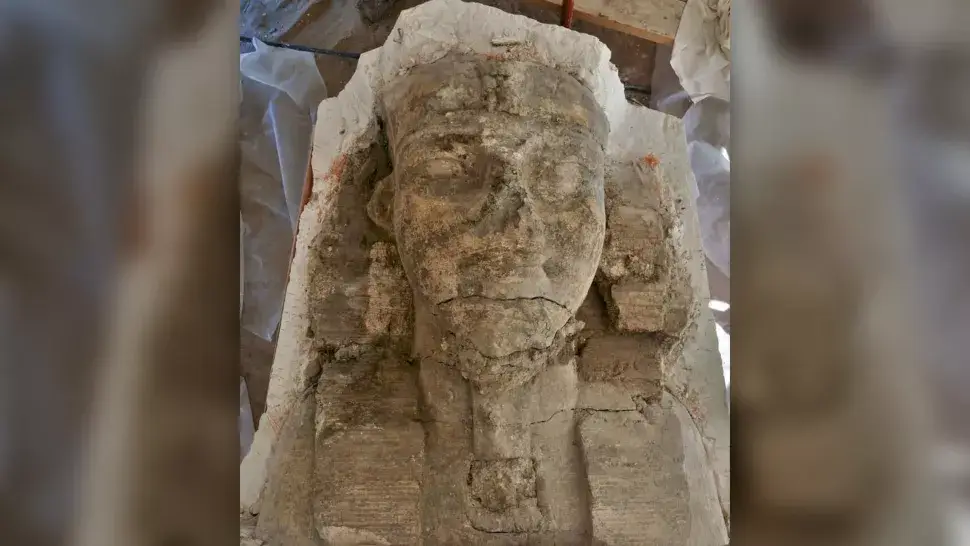In what can be described as an important find, archaeologists in Egypt discovered two statues of King Amenhotep III who ruled the region from 1390 B.C. to 1353 B.C. and whose reign is known in history for peace and prosperity. These look like sphinxes and are made of limestone the Egyptian Ministry of Tourism and Antiquities said.
As per a report in livescience.com, these statues were found by an Egyptian-German archaeological mission. When created for King Amenhotep III, these were 26 feet or eight metres long.
Amenhotep III was grandfather of King Tutankhamun and an 18th-dynasty king.
The Ministry’s statement stated that the statues were unearthed in the ancient capital of Thebes or what is called Luxor in modern day from King Amenhotep III’s mortuary temple.
Also read: How Masters and Apprentices worked together to produce Ancient Egypt’s stunning Temple Art
The Colossi of Memnon and Amenhotep III Temple Conservation Project which started in 1998 found these sphinx-like Amenhotep III depictions known as colossi also discovered ruins of walls and columns at the mortuary temple. The place of worship was decorated by the ancient people of Egypt with ritual and ceremonial scenes.
Amenhotep III’s two colossi depict him as donning a headdress which is mongoose-shaped, sporting a royal beard and wearing a necklace which is broad, said Mustafa Waziri, secretary-general of the Supreme Council of Antiquities. On one colossi, the inscription reads: “the beloved of Amun-Re”, which is a reference to Amenhotep III.
Talking to Al-Monitor, Egyptolologist Hourig Sourouzian, said: "This temple housed a large number of statues, models and wall decorations, before it was hit by a devastating earthquake in 1200 B.C."
Sourouzian is the head of the archaeological mission.
Along with this important find, the archaeologists also discovered three statues of the powerful goddess Sakhmet, also written as Sekhmet, which to their delight were well-preserved. Located at the open interior courtyard or peristyle courtyard it shows the goddess with a lion’s head on a woman’s body.

Sourouzian told the media: “In the peristyle, the newly discovered pieces of wall relief reveal new scenes of the Heb-Sed, a festival of the king started after 30 years of his rule and repeated every three years thereafter.”
Sharing details about the festival, Abdel Rahim Rihan who is Director General of Research, Archaeological Studies and Scientific Publication in South Sinai at the Ministry of Tourism and Antiquities with Al-Monitor remarked that it was, “One of the most important feasts for ancient Egyptians that celebrates the end of the 30th year of the king's ascension to the throne. The depictions of this festival show the king on his throne in full strength, with the crowds around him happy and excited, waiting for his speech promising them another 30-year reign full of prosperity and opulence. On this occasion, the king would also make offerings to the gods."
Also read: 20,000-year-old Stone Age cave paintings found near Delhi bring alive ancient civilisation
The festival also provided the pharaoh to demonstrate his physical ability and power by doing a run around a race track in the courtyard, Rahim Rihan said.
Following the survey and investigation of the site, the team intends put artefacts back in their original spots in the temple. A plan on how best to manage the place will also be put in place, informed Sourouzian.




















